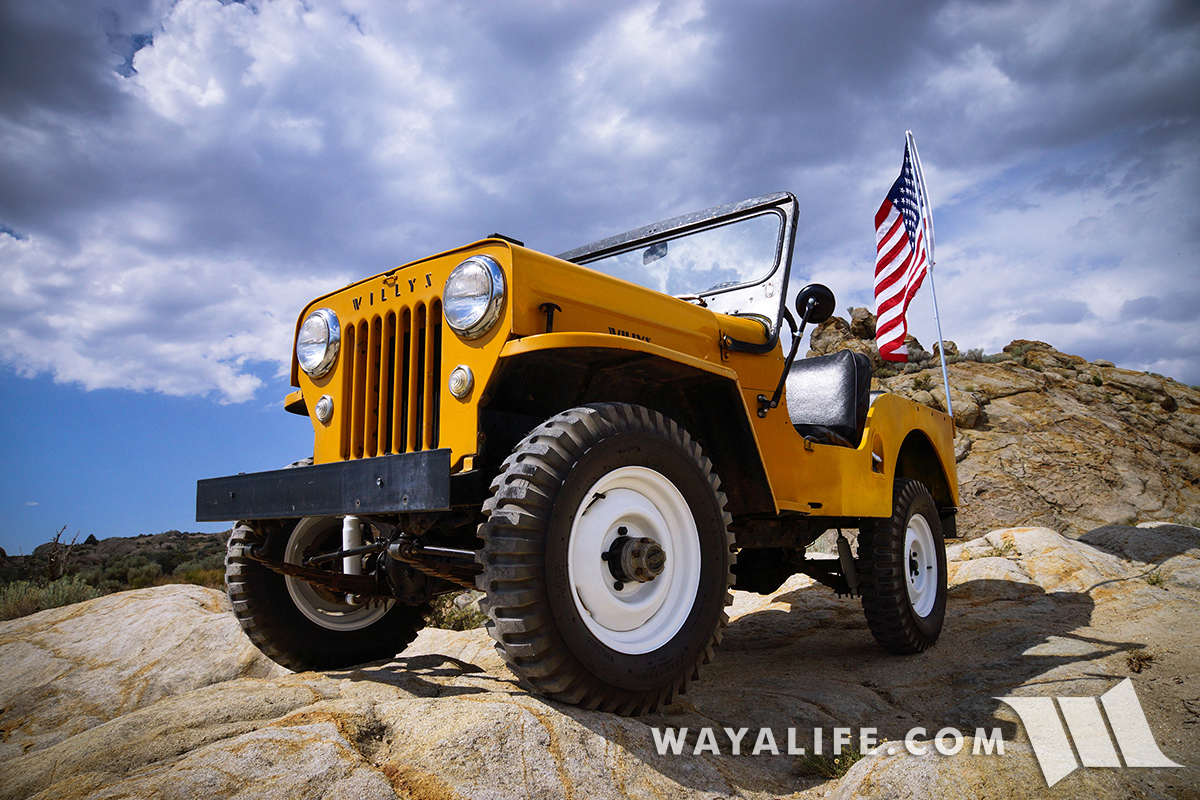You are using an out of date browser. It may not display this or other websites correctly.
You should upgrade or use an alternative browser.
You should upgrade or use an alternative browser.
Stability: narrow vs wide track
- Thread starter Lewis1984
- Start date
View attachment 427360Haha. Sure about making it a daily driver?
Upvote
0
jeeeep
Hooked
don't make sharp turns at high speedHello everyone. I plan on buying a CJ-7 later this year to be my daily driver and have a question about the difference in stability between the narrow and wide track versions. Can anyone tell me how much of a difference there is between the two when driving? Thank you.
Upvote
0
Awesome, I appreciate it!Google 60 minutes jeep cj. You will find your answer.
Upvote
0
GP NOIR
Hooked

We are sure about that. All else being equal, a wider track increases stability by making the vehicle more resistant to rollovers. (There are other factors that play a role in rollover resistance- center of gravity, roll center and weight transfer, for example.)
A wider track has more leverage against side G forces. This allows the chassis to take turns and transition from left to right at a higher rate of speed. The downside is an increased turning radius.
A rig with a wider track can handle greater side angles before tipping. The downside is a rig with with a wider track will have to experience more side angles to clear certain obstacles, such as a narrow gulch with a vertical wall on one side and a slope on the other because the tires on the slope side will have to ride up higher. Another downside is a shallower “break over” angle between the tires.
The narrower track has the advantage in maneuvering in tight spaces, such as trails winding through a dense forest, narrow gulches and between large closely packed boulders.
I learned to drive in a mostly stock 48 Willys with ancient worn out shocks. You can have a lot of fun in a Jeep with a narrow track. You gotta know what your limitations are. That said, all else being equal, a CJ with factory wide track axles is more desirable than a CJ with factory narrow track axles. The wider track became the standard for a reason.
60 Seconds is not a reliable source about automotive defects. They have staged events to fit the narrative. For example, GM had come under fire for light truck gas tanks igniting in flames in a collision. 60 Seconds filmed tests documenting this. Turns out, the only way 60 Seconds could get the gas tanks to ignite on impact was to fit the truck with an incendiary.
Consumer Reports killed the Suzuki Samurai with their rollovers tests. They fitted Samurais with outriggers to keep the vehicles from rolling over on its side. Turned out the weight of the outriggers was over tipping the vehicles.
Last edited:
Upvote
0
GP NOIR
Hooked
Maybe you can. Maybe you can’t. You’ll never know until you actually drive the Jeep and find out what works for you.IDK, can you really feel the 4" difference between the two? Can always throw on a set of wheel spacers to widen it out or swap to after market wheels with more offset
Wheel spacers and/or shallower backspacing will get you a wider track. They also increase stress on the ball joints and sacrifice scrub radius. Widening the track with spacers or rims is fine as long as you don’t take it to the extreme.
Upvote
0
Ddays
Hooked
Maybe you can. Maybe you can’t. You’ll never know until you actually drive the Jeep and find out what works for you.
Wheel spacers and/or shallower backspacing will get you a wider track. They also increase stress on the ball joints and sacrifice scrub radius. Widening the track with spacers or rims is fine as long as you don’t take it to the extreme.
Which is why I mentioned 4" and not 12
Point being I wouldn't base my decision on what version of a CJ you look at - you can always add spacers is you feel the need.
Upvote
0
bobfriesenhahn
Hooked
In my experience, tire choice can make a big difference to the feeling of stability in a CJ. Tires which feel soft and mooshy provide less support than well structured tires with a firmer edge.IDK, can you really feel the 4" difference between the two? Can always throw on a set of wheel spacers to widen it out or swap to after market wheels with more offset
Upvote
0
Good to know!don't make sharp turns at high speed
Awesome, I appreciate the information! Definitely gives me a lot to think about.View attachment 427369
We are sure about that. All else being equal, a wider track increases stability by making the vehicle more resistant to rollovers. (There are other factors that play a role in rollover resistance- center of gravity, roll center and weight transfer, for example.)
A wider track has more leverage against side G forces. This allows the chassis to take turns and transition from left to right at a higher rate of speed. The downside is an increased turning radius.
A rig with a wider track can handle greater side angles before tipping. The downside is a rig with with a wider track will have to experience more side angles to clear certain obstacles, such as a narrow gulch with a vertical wall on one side and a slope on the other because the tires on the slope side will have to ride up higher. Another downside is a shallower “break over” angle between the tires.
The narrower track has the advantage in maneuvering in tight spaces, such as trails winding through a dense forest, narrow gulches and between large closely packed boulders.
I learned to drive in a mostly stock 48 Willys with ancient worn out shocks. You can have a lot of fun in a Jeep with a narrow track. You gotta know what your limitations are. That said, all else being equal, a CJ with factory wide track axles is more desirable than a CJ with factory narrow track axles. The wider track became the standard for a reason.
60 Seconds is not a reliable source about automotive defects. They have staged events to fit the narrative. For example, GM had come under fire for light truck gas tanks igniting in flames in a collision. 60 Seconds filmed tests documenting this. Turns out, the only way 60 Seconds could get the gas tanks to ignite on impact was to fit the truck with an incendiary.
Consumer Reports killed the Suzuki Samurai with their rollovers tests. They fitted Samurais with outriggers to keep the vehicles from rolling over on its side. Turned out the weight of the outriggers was over tipping the vehicles.
Upvote
0
Good point... I didn't think about that, but it makes sense. Thank you!In my experience, tire choice can make a big difference to the feeling of stability in a CJ. Tires which feel soft and mooshy provide less support than well structured tires with a firmer edge.
Upvote
0
In my opinion, stock CJ-7 to stock CJ-7, there is little to no difference at all. Hell, I drove a CJ-7 with 4" of lift, 35's and on narrow tracks and never gave stability a second though but if anything, the taller you go is where you might feel a difference between the two. But hey, what would I know.Hello everyone. I plan on buying a CJ-7 later this year to be my daily driver and have a question about the difference in stability between the narrow and wide track versions. Can anyone tell me how much of a difference there is between the two when driving? Thank you.

Upvote
0
GP NOIR
Hooked
I threw that disclaimer in to cut the internet Yabutts off at the knees.Which is why I mentioned 4" and not 12
“Yabutt if you use too much offset, your ball joints will have a nuclear runaway and melt down to the center of the earth!!”
Good point- and as Eddie has actual experience driving the Jeep, this bears repeating-Point being I wouldn't base my decision on what version of a CJ you look at - you can always add spacers is you feel the need.
In my opinion, stock CJ-7 to stock CJ-7, there is little to no difference at all. Hell, I drove a CJ-7 with 4" of lift, 35's and on narrow tracks and never gave stability a second though but if anything, the taller you go is where you might feel a difference between the two. But hey, what would I know.

Upvote
0
bobfriesenhahn
Hooked
Does it have anti-sway bars?With all that said, where I do feel stability issues is on my CJ-3B and at stock height and running NDTs. I'm sure it's fine but it definitely can feel a bit sketch on fast turns.

Upvote
0


